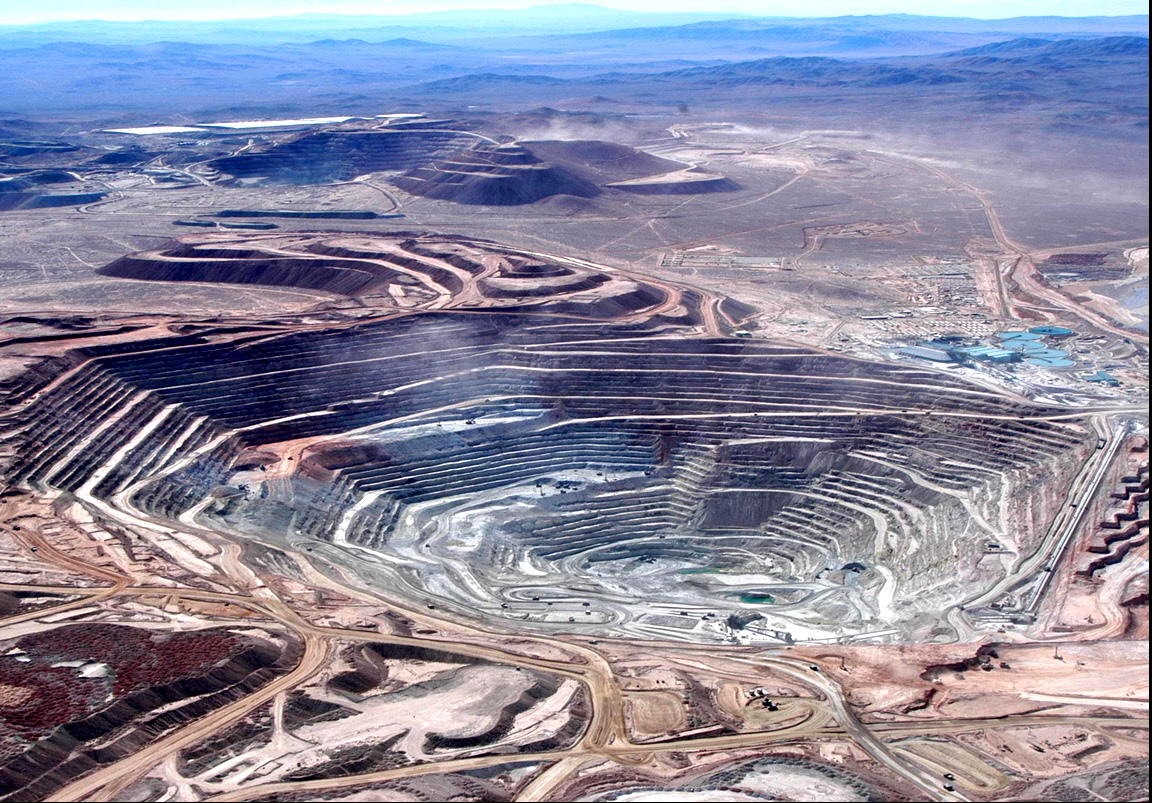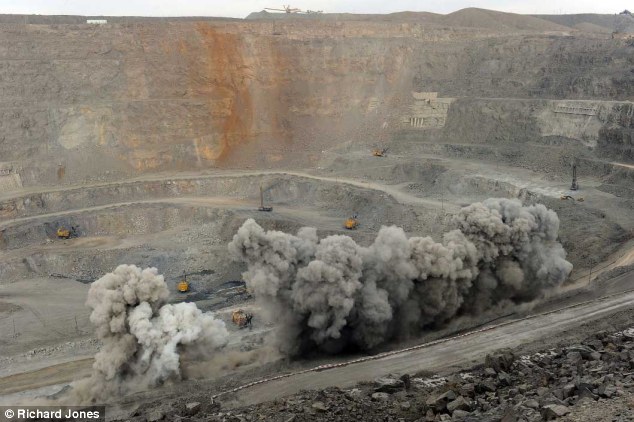The Limits of Clean Energy
The conversation about climate change has been blazing ahead recently. Propelled by the school climate strikes and social movements like Extinction Rebellion, a number of governments have declared a climate emergency, and progressive political parties are making plans—at last—for a rapid transition to clean energy under the banner of the Green New Deal.
This is a welcome shift, and we need more of it. But a new problem is beginning to emerge that warrants our attention. Some proponents of the Green New Deal seem to believe that it will pave the way to a utopia of “green growth.” Once we trade dirty fossil fuels for clean energy, there’s no reason we can’t keep expanding the economy forever.
This narrative may seem reasonable enough at first glance, but there are good reasons to think twice about it. One of them has to do with clean energy itself.
The phrase “clean energy” normally conjures up happy, innocent images of warm sunshine and fresh wind. But while sunshine and wind is obviously clean, the infrastructure we need to capture it is not. Far from it. The transition to renewables is going to require a dramatic increase in the extraction of metals and rare-earth minerals, with real ecological and social costs.
We need a rapid transition to renewables, yes—but scientists warn that we can’t keep growing energy use at existing rates. No energy is innocent. The only truly clean energy is less energy.
In 2017, the World Bank released a little-noticed report that offered the
first comprehensive look at this question. It models the increase in material extraction that would be required to build enough solar and wind utilities to produce an annual output of about 7 terawatts of electricity by 2050. That’s enough to power roughly half of the global economy. By doubling the World Bank figures, we can estimate what it will take to get all the way to zero emissions—and the results are staggering: 34 million metric tons of copper, 40 million tons of lead, 50 million tons of zinc, 162 million tons of aluminum, and no less than 4.8 billion tons of iron.
In some cases, the transition to renewables will require a massive increase over existing levels of extraction. For neodymium—an essential element in wind turbines—extraction will need to rise by nearly 35 percent over current levels. Higher-end estimates reported by the World Bank suggest it could double.
The same is true of silver, which is critical to solar panels. Silver extraction will go up 38 percent and perhaps as much as 105 percent. Demand for indium, also essential to solar technology, will more than triple and could end up skyrocketing by 920 percent.
And then there are all the batteries we’re going to need for power storage. To keep energy flowing when the sun isn’t shining and the wind isn’t blowing will require enormous batteries at the grid level. This means 40 million tons of lithium—an eye-watering 2,700 percent increase over current levels of extraction.
That’s just for electricity. We also need to think about vehicles. This year, a group of leading British scientists
submitted a letter to the U.K. Committee on Climate Change outlining their concerns about the ecological impact of electric cars. They agree, of course, that we need to end the sale and use of combustion engines. But they pointed out that unless consumption habits change, replacing the world’s projected fleet of 2 billion vehicles is going to require an explosive increase in mining: Global annual extraction of neodymium and dysprosium will go up by another 70 percent, annual extraction of copper will need to more than double, and cobalt will need to increase by a factor of almost four—all for the entire period from now to 2050.
The problem here is not that we’re going to run out of key minerals—although that may indeed become a concern. The real issue is that this will exacerbate an already existing crisis of overextraction. Mining has become one of the biggest single drivers of deforestation, ecosystem collapse, and biodiversity loss around the world.
Ecologists estimate that even at present rates of global material use, we are overshooting
sustainable levels by 82 percent.
Take silver, for instance. Mexico is home to the Peñasquito mine, one of the biggest silver mines in the world. Covering nearly 40 square miles, the operation is staggering in its scale: a sprawling open-pit complex ripped into the mountains, flanked by two waste dumps each a mile long, and a tailings dam full of toxic sludge held back by a wall that’s 7 miles around and as high as a 50-story skyscraper. This mine will produce
11,000 tons of silver in 10 years before its reserves, the biggest in the world, are gone.
To transition the global economy to renewables, we need to commission up to 130 more mines on the scale of Peñasquito. Just for silver.
Lithium is another ecological disaster. It takes 500,000 gallons of water to produce a single ton of lithium. Even at present levels of extraction this is causing problems. In the Andes, where most of the world’s lithium is located, mining companies are burning through the water tables and leaving farmers with nothing to irrigate their crops. Many have had no choice but to abandon their land altogether.
Meanwhile, chemical leaks from lithium mines have poisoned rivers from Chile to Argentina, Nevada to Tibet, killing off whole freshwater ecosystems. The lithium boom has barely even started, and it’s
already a crisis.
And all of this is just to power the existing global economy. Things become even more extreme when we start accounting for growth.
As energy demand continues to rise, material extraction for renewables will become all the more aggressive—and the higher the growth rate, the worse it will get.
It’s important to keep in mind that most of the key materials for the energy transition are located in the global south. Parts of Latin America, Africa, and Asia will likely become the target of a new scramble for resources, and some countries may become victims of new forms of colonization. It happened in the 17th and 18th centuries with the hunt for gold and silver from South America. In the 19th century, it was land for cotton and sugar plantations in the Caribbean. In the 20th century, it was diamonds from South Africa, cobalt from Congo, and oil from the Middle East. It’s not difficult to imagine that the scramble for renewables might become similarly violent.
If we don’t take precautions, clean energy firms could become as destructive as fossil fuel companies—buying off politicians, trashing ecosystems, lobbying against environmental regulations, even
assassinating community leaders who stand in their way.
Some hope that nuclear power will help us get around these problems—and surely it needs to be part of the mix. But nuclear comes with its own constraints. For one, it takes so long to get new power plants up and running that they can play only a small role in getting us to zero emissions by midcentury. And even in the longer term, nuclear
can’t be scaled beyond about 1 terawatt. Absent a miraculous technological breakthrough, the vast majority of our energy will have to come from solar and wind.
None of this is to say that we shouldn’t pursue a rapid transition to renewable energy. We absolutely must and urgently. But if we’re after a greener, more sustainable economy, we need to disabuse ourselves of the fantasy that we can carry on growing energy demand at existing rates.
Of course, we know that poorer countries still need to increase their energy use in order to meet basic needs. But richer countries, fortunately,
do not. In high-income nations, the transition to green energy needs to be accompanied by a planned reduction of aggregate energy use.
How might this be accomplished? Given that the majority of our energy is used to power the extraction and production of material goods, the Intergovernmental Panel on Climate Change
suggests that high-income nations reduce their material throughput—legislating longer product life spans and rights to repair, banning planned obsolescence and throwaway fashion, shifting from private cars to public transportation, while scaling down socially unnecessary industries and wasteful luxury consumption like the arms trade, SUVs, and McMansions.
Reducing energy demand not only enables a faster transition to renewables, but also ensures that the transition doesn’t trigger new waves of destruction. Any Green New Deal that hopes to be socially just and ecologically coherent needs to have these principles at its heart.
getpocket.com/explore/item/the-limits-of-clean-energy


